Man, I love Boltyn! He may not be S-Tier, but the new Legendary bestowed on him in Dynasty has reinvigorated my passion for Light Warrior. The trusty old deck box has once again been cracked, the yellow sleeves are out, and Raydn is back on the table (I’ll cover sabers in this article, too, don’t worry). No matter how the deck is built, it's nice that Boltyn has a fresh reason to see more play.
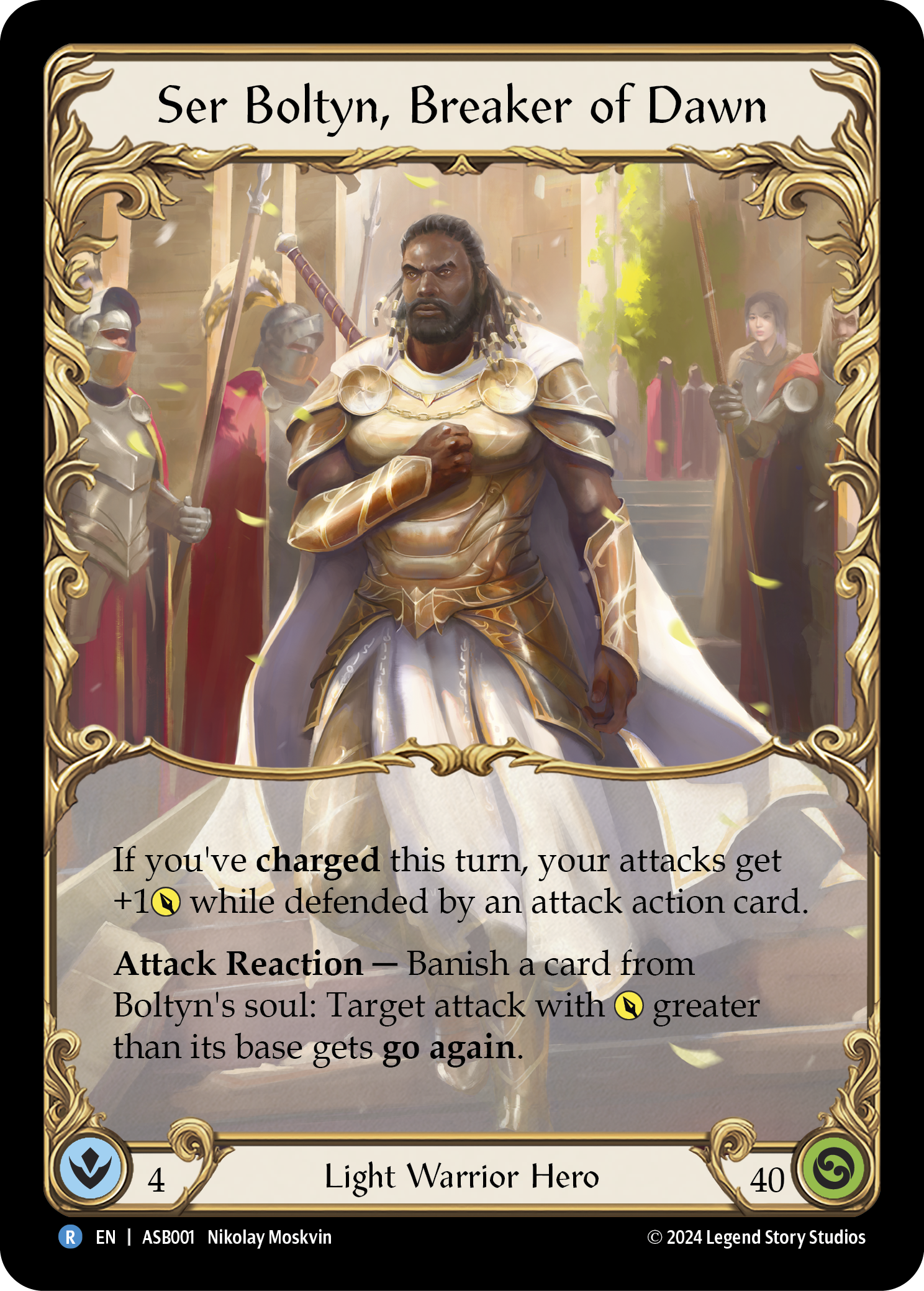
I’ve also seen some new players interested in picking up the deck, either as their first hero in FAB or just a new interest, secondary to their main hero. For this reason, I’ll be covering as much as I can about this new card, from the basics and rules interactions, to play lines that could help you surprise your opponents in the upcoming ProQuest season.
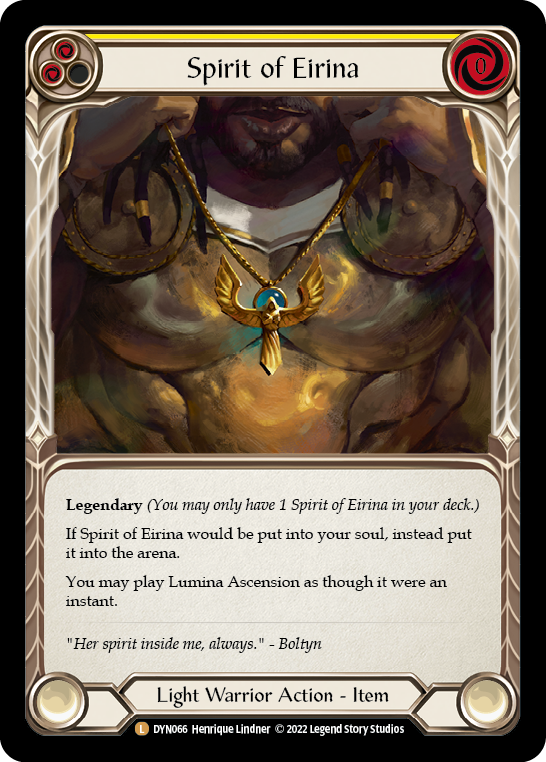
Basics and Rules
If you’re unfamiliar with the new card, the gist of Spirit of Eirina is it's an item that enters the board either by being charged or played, and allows Boltyn to play Lumina Ascension at instant speed. There are quite a few nuances to the new tool, which we’ll cover, but let’s begin with the rules surrounding it.
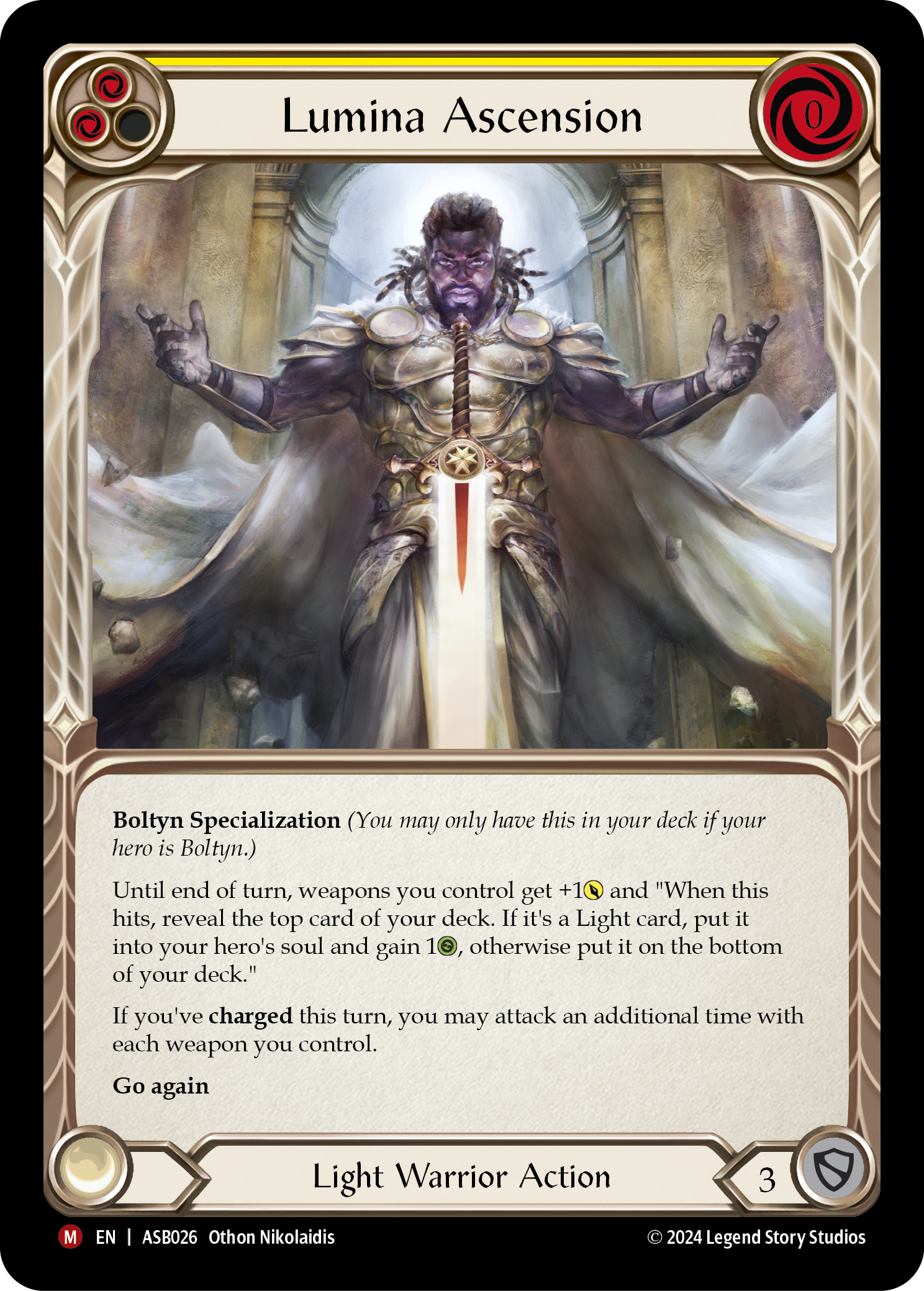
Notably, it is not required that Lumina be played as an instant if the player declares Lumina is being played as an action. Also, according to the release notes, putting Spirit of Eirina into the arena instead of your soul is a replacement effect. There is no priority between when it would have been put into your soul and when it is put into the arena, which means it is not something the opponent can respond to.
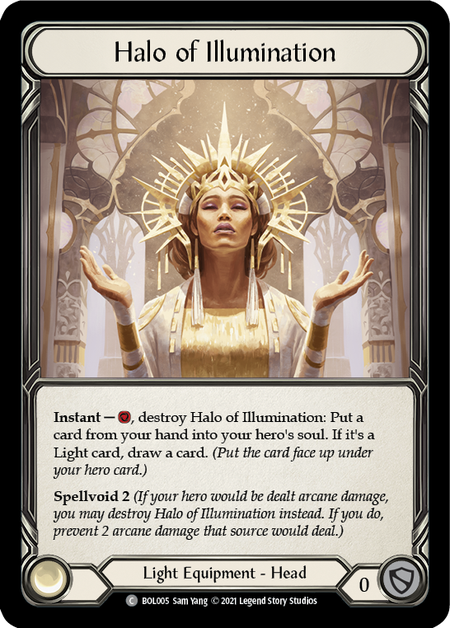
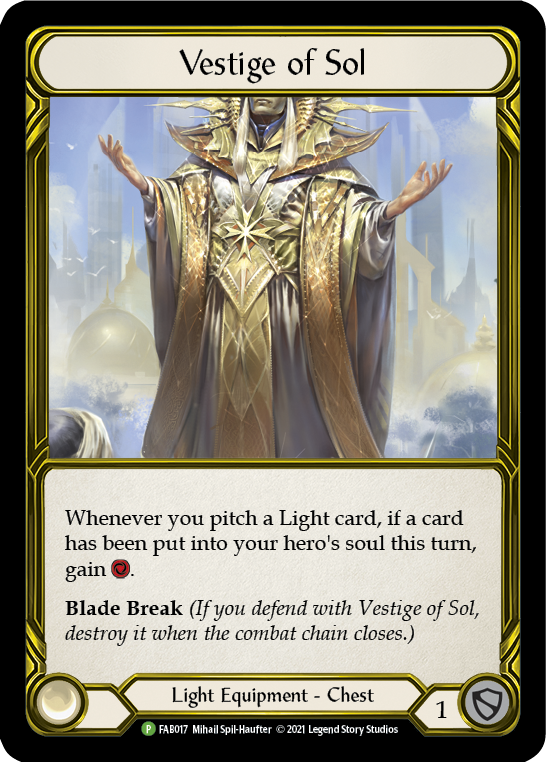
Another important distinction with Spirit is that it meets conditions related to cards going into soul (such as Halo of Illumination or the charge mechanic), but it does not meet conditions related to a card being put into soul (such as with Vestige of Sol). This is because the act of charging happens, but the card ends up on the board, not in Boltyn’s soul.
Melting the Ice
The ability to create an action point at instant speed is a new and powerful tool in the Light Warrior arsenal, and a couple implications that exist with this power are immediately apparent. Boltyn’s Ice matchups are notoriously atrocious, since Ice heroes have plenty of ways to tax Boltyn’s card-hungry and resource-starved style of play. Two of the scariest tools they employ to accomplish this are Blizzard and Hypothermia. Let’s look at what these cards do.
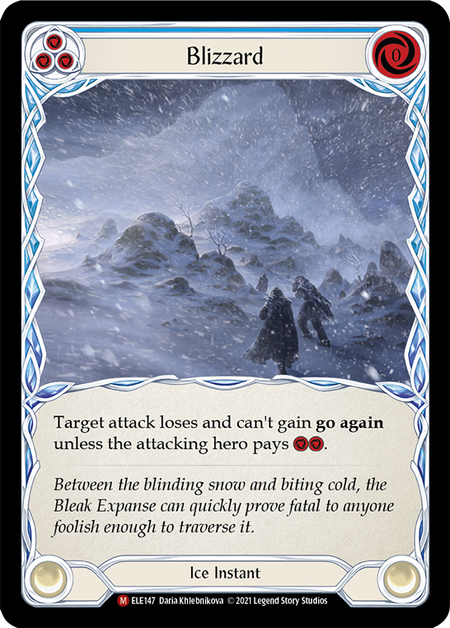
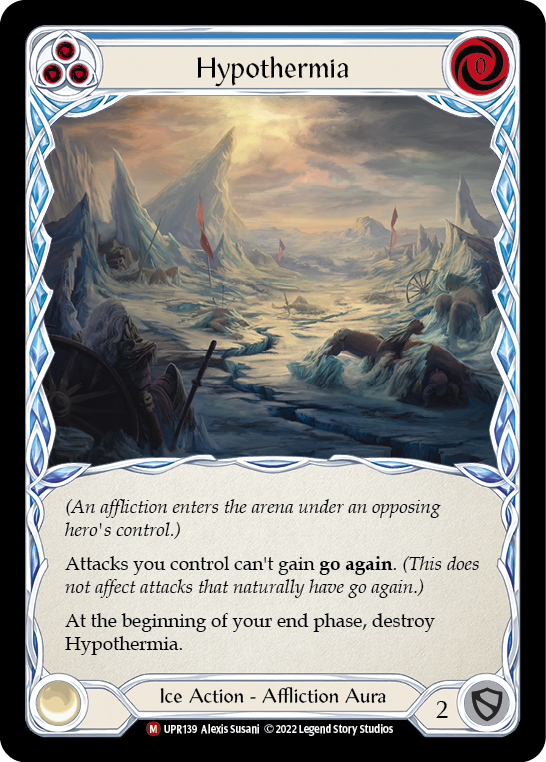
Blizzard is an instant that causes Boltyn’s attack to both lose go again and be prevented from gaining it unless he pays a cost of two resources. Money is always quite tight for Boltyn, so we’d like to avoid having to pay to continue our combat chain, if possible. In this situation, playing Lumina with Spirit on the board is our way forward, allowing us to gain an action point at instant speed and continue our attacks that way. No go again? No problem! Boltyn's previous issue of encountering Blizzard after Courage of Bladehold and Gallantry Gold have been cracked is now safely in the past.
Hypothermia, however, is a different story. This Ice affliction, made popular by Iyslander’s ability to play it as instant speed on her opponent’s turn, acts as a Blizzard on steroids, since it applies the same prevention of go again to any and all attacks that would occur after Hypothermia has resolved for the turn. Playing Lumina at instant speed would still create additional action points that could be used for attacks, but the use cases where one Lumina should be valued at one weapon swing’s worth of damage are uncommon, and probably not advisable.
It could be argued that playing Lumina in response to Hypothermia at instant speed is correct if the action point Boltyn gains is used to play an attack action presenting lethal damage - such as a 0 for 4, 1 for 5, or an Enlightened Strike for 7 - if sitting on a lucky 5-card hand. But since none of Boltyn’s attack actions have natural go again, he should plan on any attack happening with this action point to be the final attack of the turn. It's worth knowing it can be done, but use sparingly.
So what about the best time to play Lumina at instant speed?
Strengthening the Vanguard
The biggest gain Spirit brings to Boltyn - and surely the best reason to rejoice over the light-bringing necklace - is the ability to play Lumina in combination with V of the Vanguard, Boltyn’s other specialization. For those new to Bolty, V of the Vanguard is an attack action that allows the pilot to charge any number of cards to Boltyn’s soul, and gain +1 damage on all attacks on the chain for every Light card charged that way.
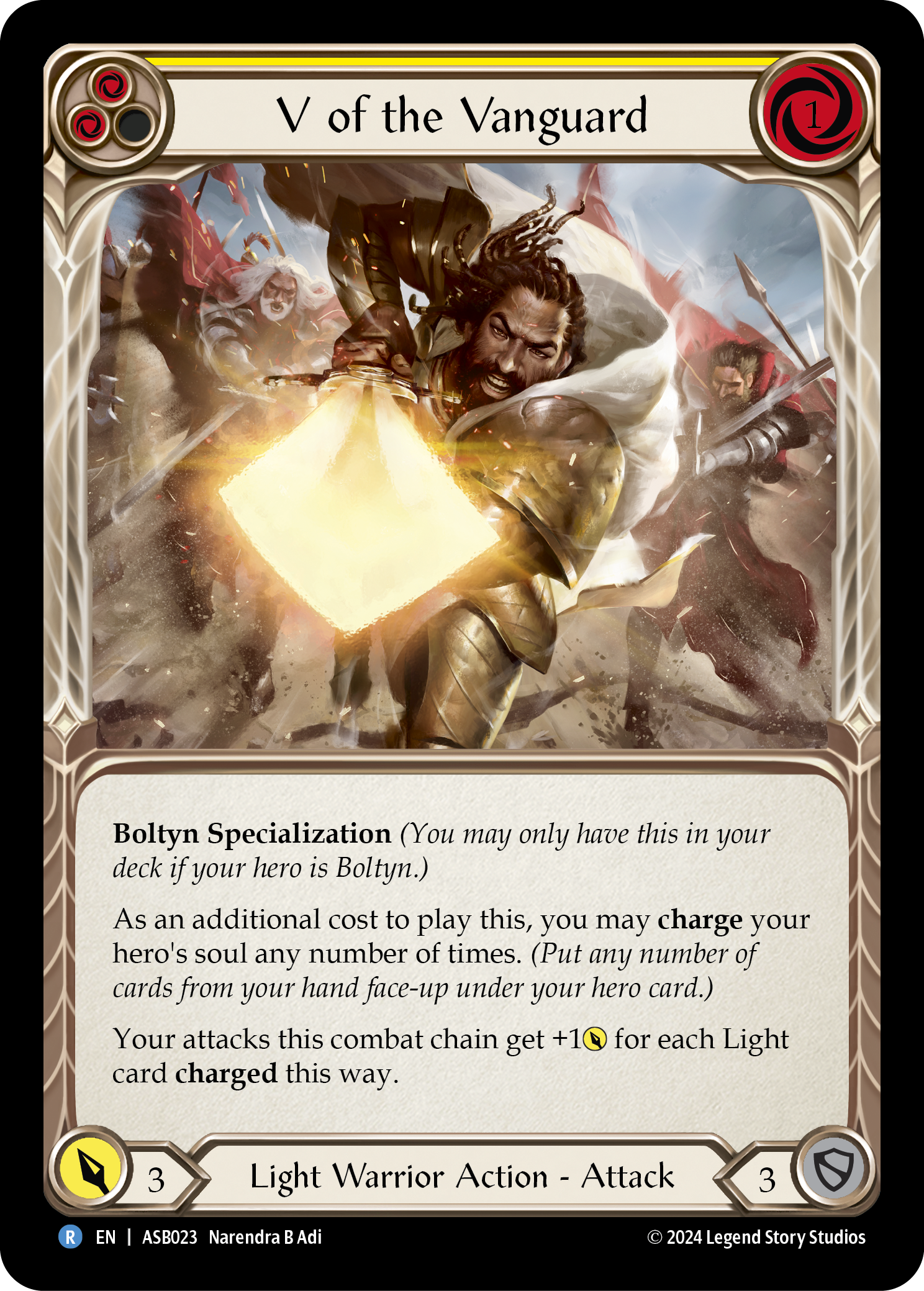
Without Spirit in play, a Lumina Ascension being played after V would break the chain, causing all potential additional damage on his attacks to be forfeited. With Spirit in play, the chain is maintained, and damage counters from both V and Lumina can be applied harmoniously across all Boltyn’s blade swings. He can now begin the saber combo turn with V of the Vanguard.
“I repeat, you can now start your saber combo with V!”
He is not only receiving a benefit from the damage output being increased, but the fact that action points are created at instant speed means his soul is receiving a benefit as well. With only four cards in soul (and without cracking Snapdragon Scalers) Boltyn can play V of the Vanguard into double Lumina and threaten 40 damage at minimum – regardless of how the opponent blocks!
Check this out:
- Activate Courage of Bladehold
- Activate Gallantry Gold
- Pitch yellow or blue
- V of the Vanguard, charging 1 (4 dmg)
- Lumina Ascension x2 at instant speed, generating 2 action points
- Cintari Saber swing 1 (6)
- Go again from soul
- Saber swing 2 (6)
- Go again from soul
- Saber swing 3 (6)
- Go again from soul
- Saber swing 4 (6)
- Go again from soul
- Saber swing 5 (6)
- Saber swing 6 (6)
= 40 damage
Let’s cover a few noteworthy things from this turn.
First, notice how the actions of Courage and Gallantry happen prior to playing V. This is necessary because playing actions after V would break the chain, and the damage benefit for the subsequent actions would be lost. Yes, this telegraphs Boltyn’s combo plans to the opponent, but unless they’re going to play Hypothermia or give you frostbites on your turn, there’s not much they can do to stop it.
Second, I’m providing an example where four cards are banished from soul and Snapdragon Scalers are saved for a future turn; but it's possible to do the same combo with only three cards in soul if Snaps are used to give V go again, instead of a card from soul or an action point generated by Lumina. Depending on the matchup, opponents with an inability to efficiently block out the saber combo may actually allow Boltyn to begin combo-ing off with even less cards in soul, since additional soul would be generated with Lumina’s on-hit ability.
Another important thing to note here is how the action points are being used, and the timing of cards banished from soul to go again. This example uses an action point on the first saber swing, and the final saber swing, to illustrate a couple things:
- Playing Lumina at instant speed during the turn’s first charge attack allows the chain to continue without the attack needing go again. This applies to any turn’s starting attack, not just one that starts with V of the Vanguard, and can be especially useful on turns where you want to chain into Lumina weapon attacks but have already used Snaps.
- Saving an action point until the final weapon swing prevents the opponent from being able to play Blizzard at instant speed and stop the combo midway through. It may be worth saving both action points on double Lumina turns until the final two swings, just in case the opponent can double Blizzard. It's unlikely, but if you have the means to give go again up until that point it's probably worth it. Use your best judgment.
The Role of Raydn
Good ol’ Raydn boomers like me will be happy to hear this increases the opportunity for fun shenanigans in our builds, as well.
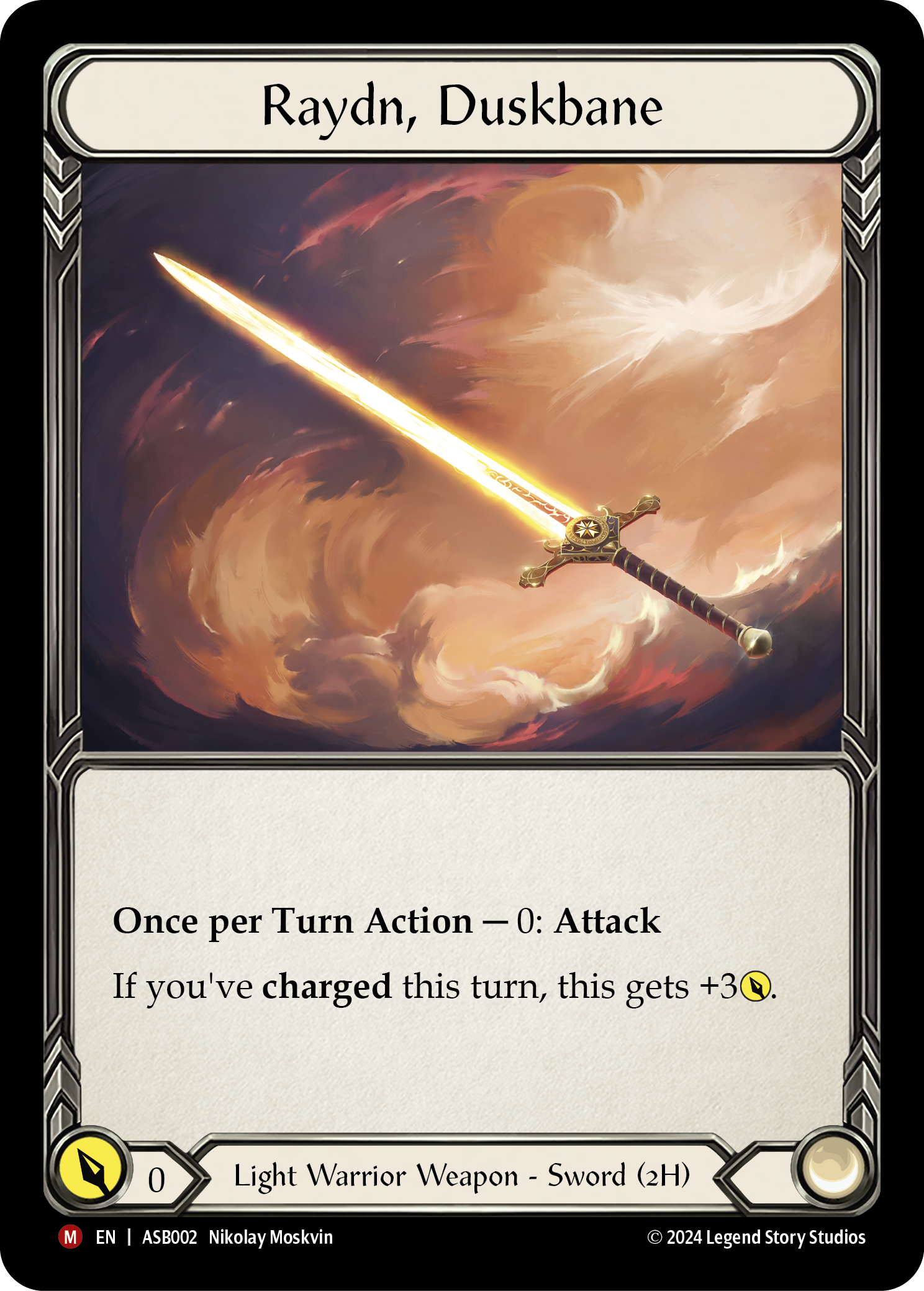
I mentioned it briefly in the example above but it's worth calling out again, that generating an action point by playing Lumina during the charge attack at the start of turn allows Boltyn to get to the weapon swings without giving the charge attack go again. This gives the pilot a lot of utility in the late game, when the opponent is refraining from blocking as not to give the attack +1 and allow Boltyn to banish from soul. It also provides an out when Snapdragon Scalers have been used on a previous turn.
That being said, my preferred time to play Lumina at instant speed is actually during the reaction step of the first Raydn swing of the turn. Opponents rarely feel the need to block Raydn, since Boltyn can grant go again due to its inherent damage buff, and they’re unlikely to suspect a Lumina since there are no actions that would telegraph the play ahead of time. Consider this hand if Spirit is already on the board:
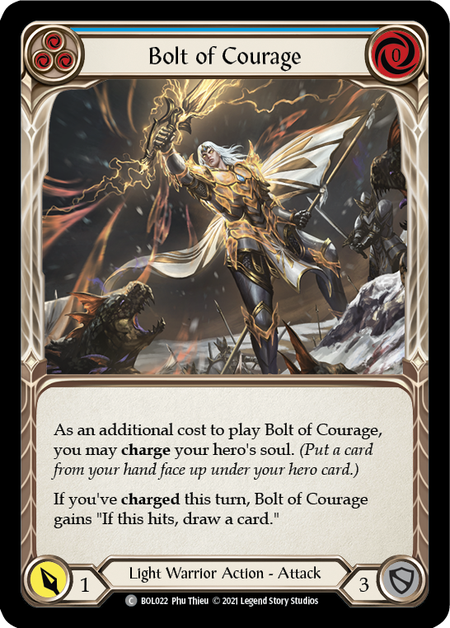
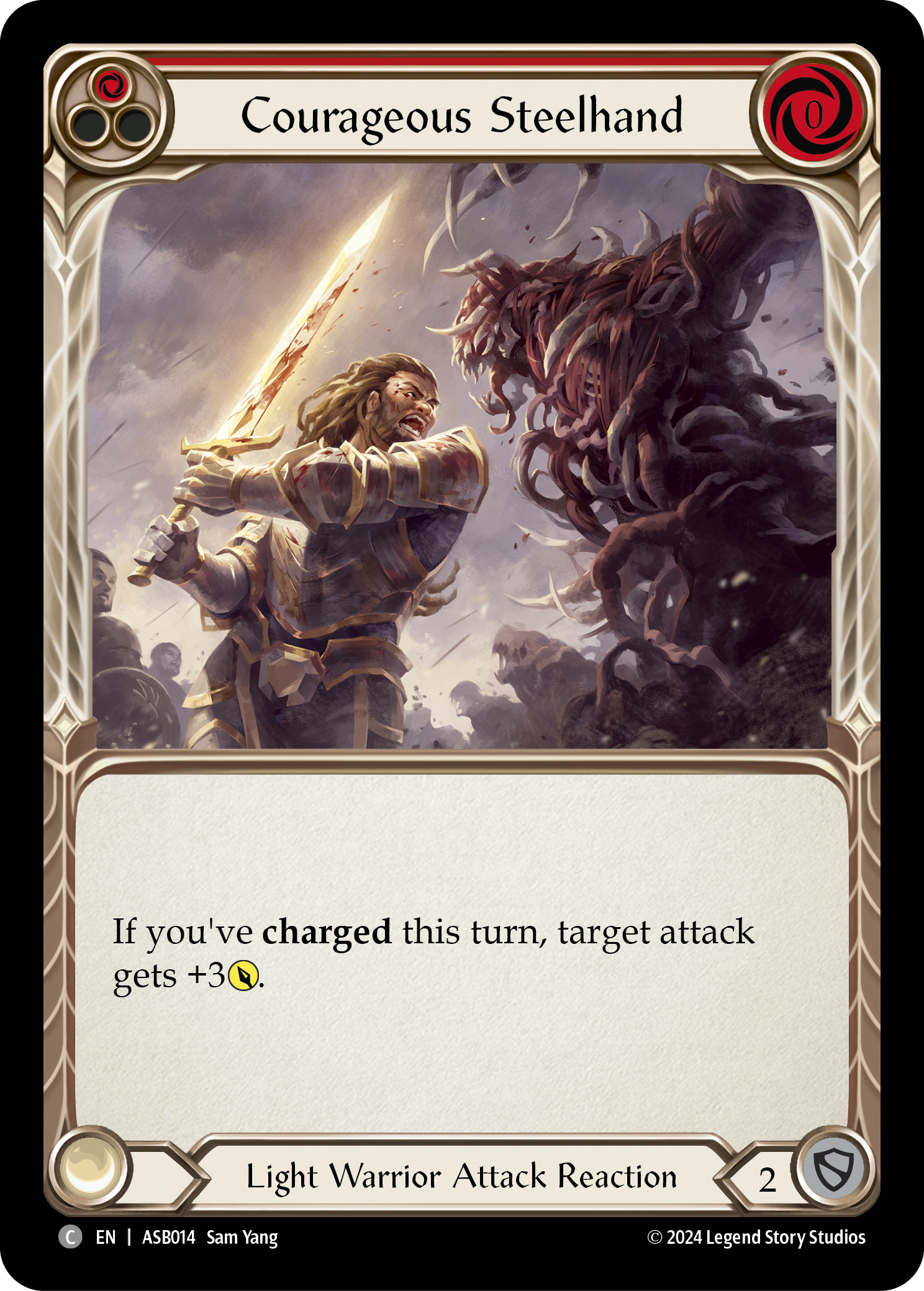
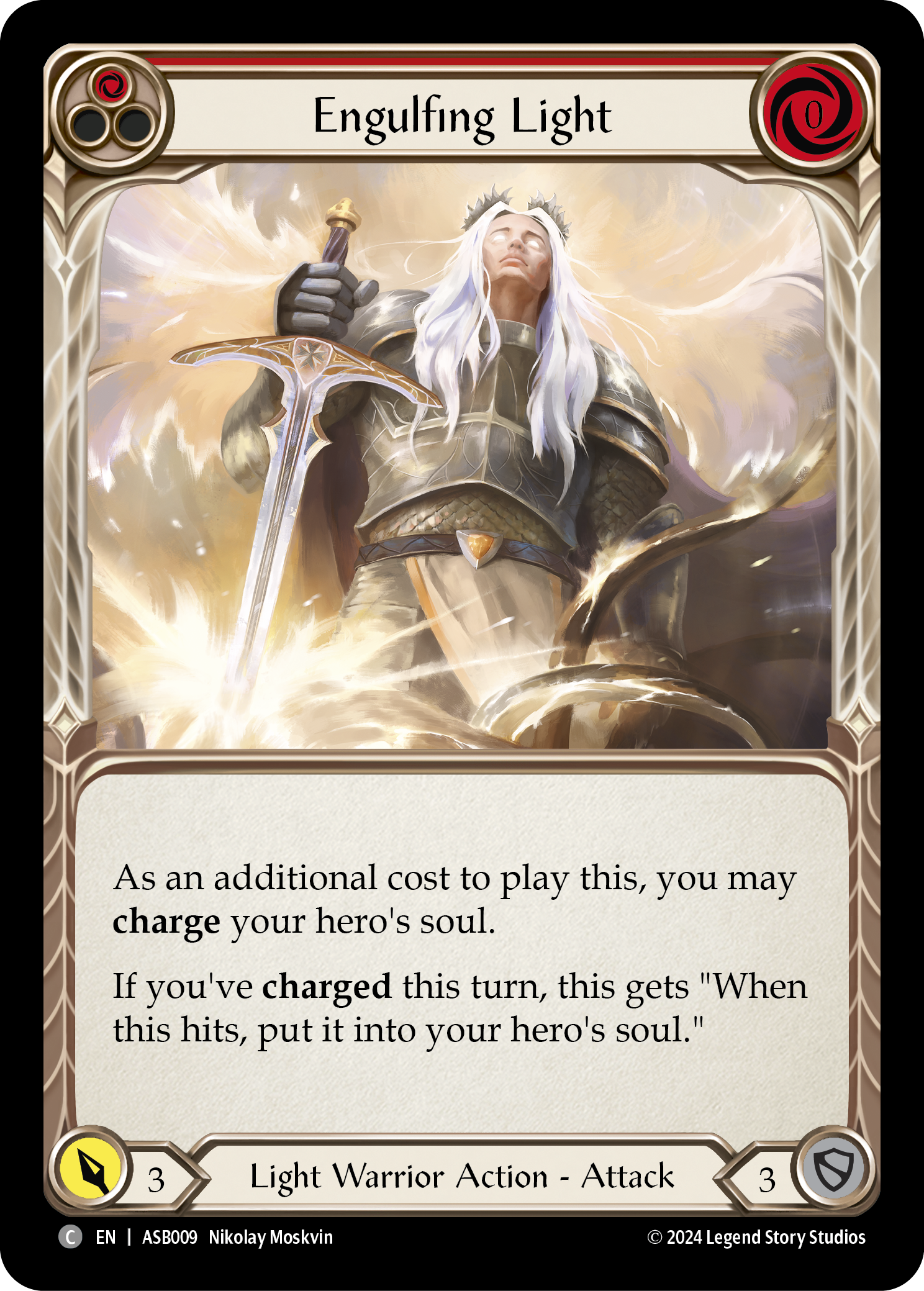

- Engulfing Light, charging Bolt of Courage
- React with Courageous Steelhand
- Go again from soul
- Raydn
- React with Lumina Ascension at instant speed, generating 1 action point
- Raydn swing 2
In this example, since Boltyn is able to get to the Raydn swing without needing the action point that instant Lumina would generate, this is the window of opportunity that works best to deploy it, and fully embraces the benefits of instant speed Ascension!
Warnings
Bear in mind that putting Spirit into Boltyn’s soul causes the item to go to the board – it doesn’t actually end up in soul. This could be problematic if Boltyn begins a turn with plans to banish a card that would normally be charged from soul to go again, since it won’t be there. For example, consider this hand with an empty soul:

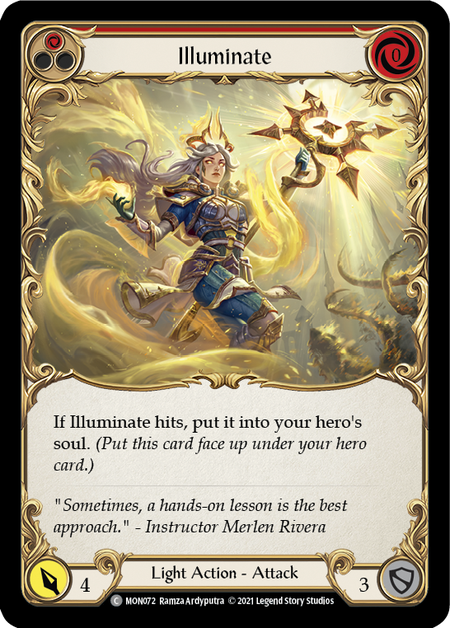

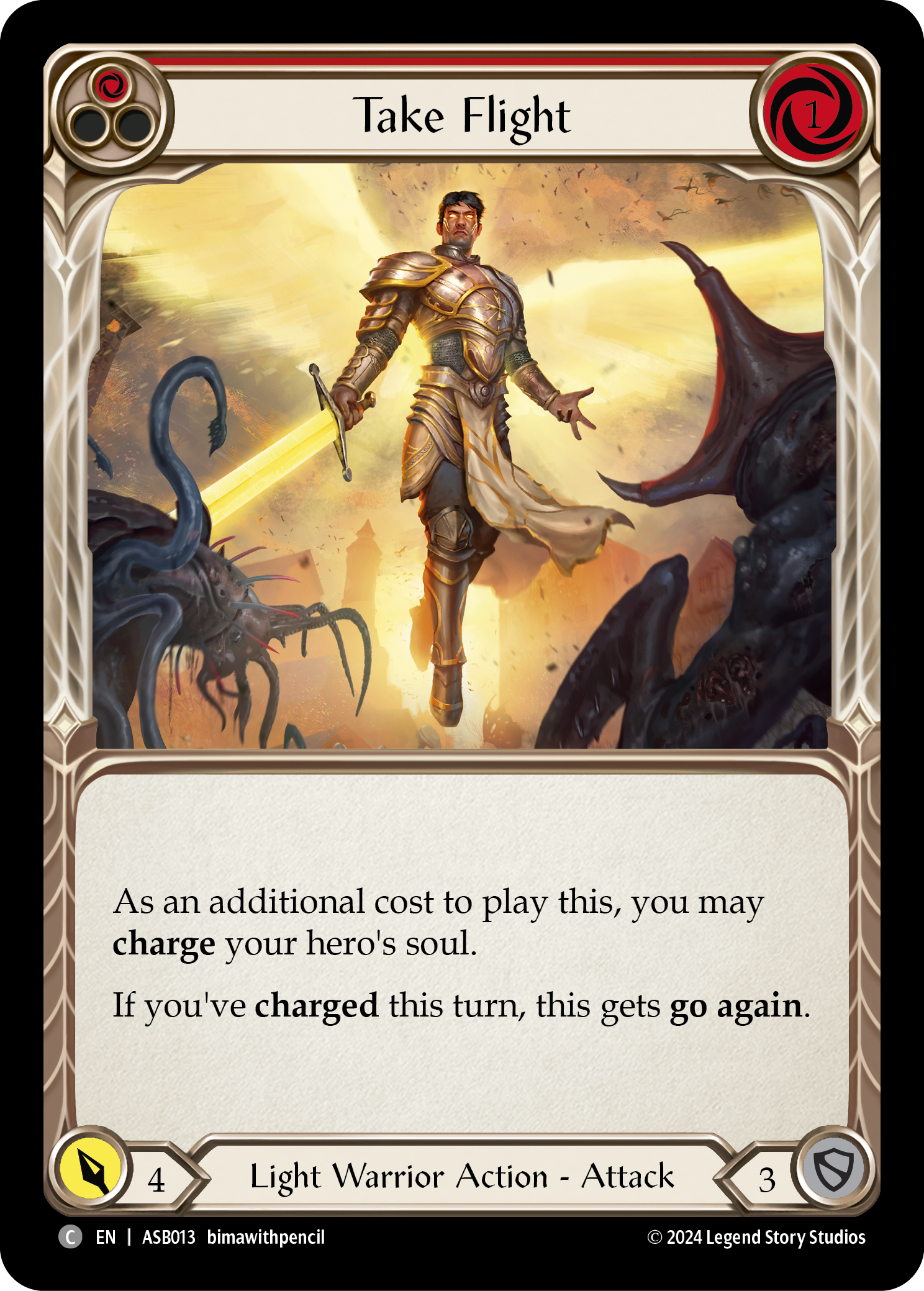
The first play line that jumps out is Take Flight charging Spirit to the board, pitching Engulfing Light (or using your Tunic counter and putting Engulfing in arsenal, ideally), into Raydn, and then into Illuminate… but that would require banishing a card from soul to grant Raydn go again, which you can’t do because we said soul is empty going into this turn. Charging any other card into Take Flight would make this possible, but Spirit goes to the board. On Lumina turns this isn’t a problem, since the action point generated by Lumina takes the place normally occupied by the card that would otherwise exist in soul, as you can see in the hand below:




Similar to the example I gave in the previous section, this hand works even if you don't have soul, because of the action point being generated in the reaction step of the first Lumina swing. Take Flight pitching Engulfing Light and charging Spirit, into Raydn, react with Lumina, swing Raydn again. Profit.
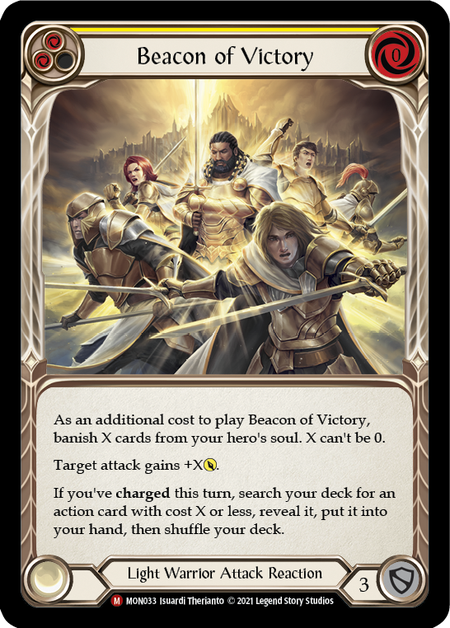
Another warning I can offer involves using Beacon of Victory to tutor Spirit from your library – it's difficult to quantify if it’s worth it. Part of the problem is that doing so sacrifices a soul just to fetch it, and unless you’re able to play another charge card later in the same turn, you’ll need to hard-cast it or hold it in hand until you can charge it in a subsequent turn. This means you’re potentially giving up another soul to give something else go again in order to cast it, or giving up your arsenal slot if Spirit is the last card in your hand. Ultimately, there’s no hard and fast rule. It depends on the matchup, what your opponent is doing, the cards you’ve seen, your game plan, and whether you’d be better served using Beacon elsewhere.
Conclusion
I hope my thoughts and examples help pique your interest in brewing and playing some Boltyn decks with this new card. It has rekindled my own Warrior spirit, and I’m thankful we received this fun tool to hold us over until we see more Light Warrior cards in future sets. While Eirina may not promote Boltyn to his place in the limelight just yet, it is certainly a step in the right direction toward increasing the power level of his deck builds. May the Spirit of Eirina be with you!





